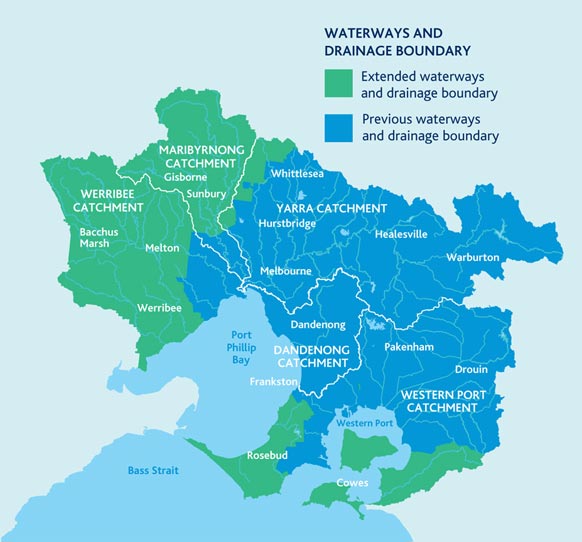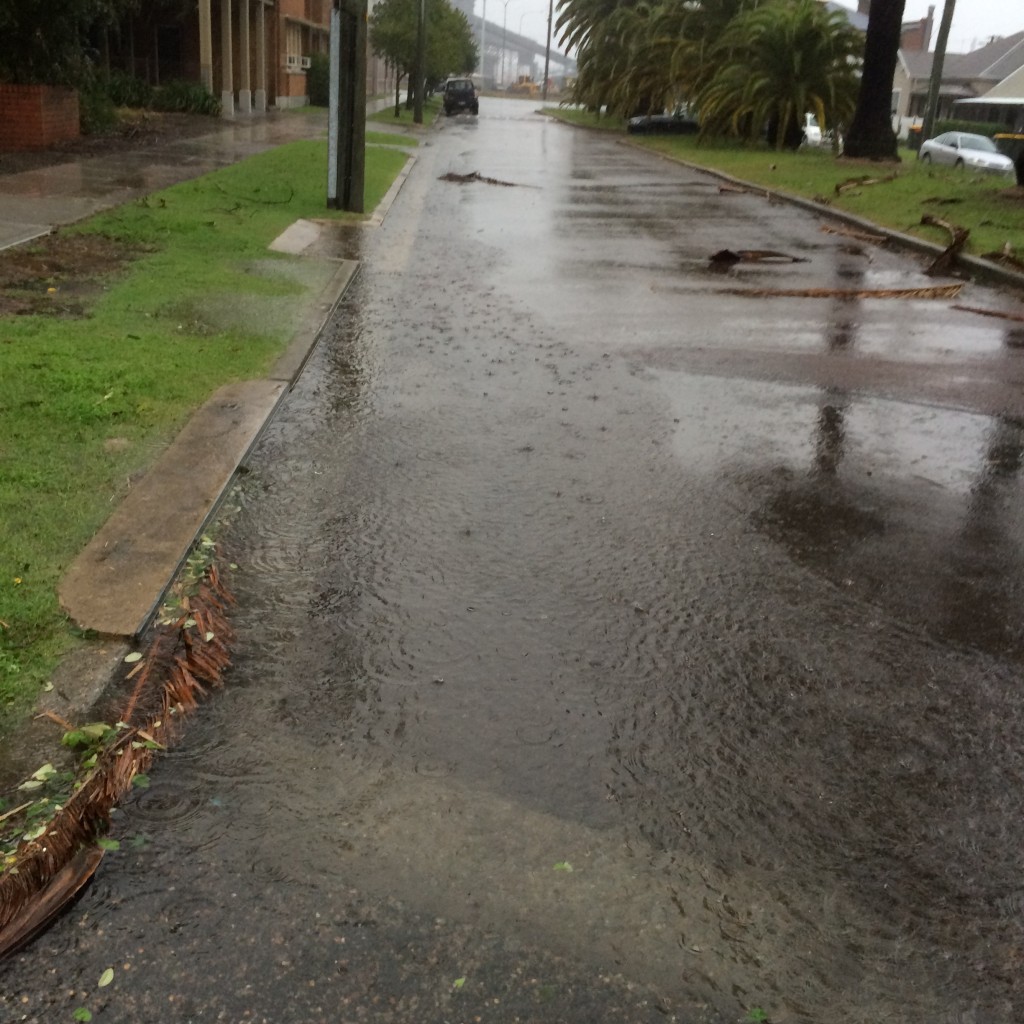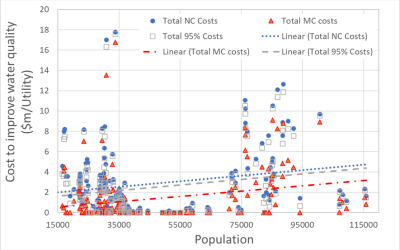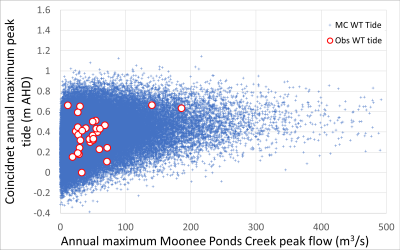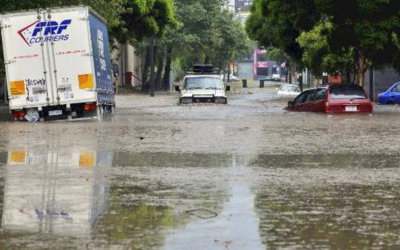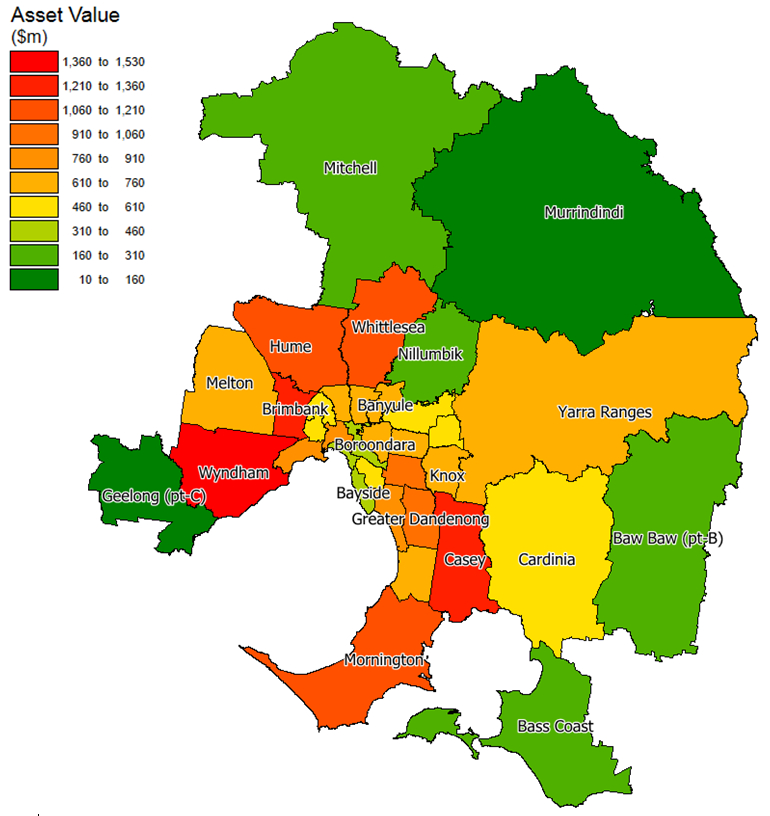
Estimated total value of stormwater assets across Greater Melbourne – including hydraulic, water quality and environmental assets
Systems Analysis quantifies urban stormwater resources and market mechanisms for stormwater and environmental management
Peer reviewed publication and presentation by Dr Peter Coombes at Stormwater 2018 conference.
Changing the way we think about stormwater management – linking impervious areas to stormwater tariffs.
What would happen if we charged for stormwater management based on the amount of impervious area like paving and concrete driveways on each property? Consider the extra motivation this would provide – if we knew we were paying for concrete – there’d be a real economic benefit to reducing impervious areas and increasing gardens and rainwater harvesting with all the obvious benefits. This is a real shift in our thinking.
And linking stormwater tariffs to stormwater management.
Imagine a situation where stormwater tariffs are transparently tied to stormwater management actions in the local catchment that generated the revenue, and a single tariff replaces multiple untied fixed changes. This would profoundly change the market for good stormwater outcomes, and the confidence of managers and property owners. Landowners could control their cost by reducing the impervious area or compensate through measures like rainwater harvesting and green infrastructure.
One of the recommendations of the Greater Melbourne Alternative Water Plan is to investigate a mechanism where the benefits for stormwater management of reduced impervious areas at the property are directly recognised in economic decision making. This Stormwater Australia 2018 Paper provides that breakthrough research.
Most water customers are unaware that they pay for the stormwater management in their community as a flat rate charges on their bill and councils rates. This means that no matter how much they contribute to the volume of stormwater generated by their property layout, they pay the same rate as someone with a higher impact.
Our current system of fixed charges from local government and Melbourne Water means that there is no clear relationship between the fixed charges paid by landowners, and the demand generated for stormwater infrastructure. The landowners paying the stormwater charge are not necessarily the ones causing the problems. Plus, the value of stormwater infrastructure in Melbourne is much greater than generally recognised, about $20 billion in 2010 rising to $40 billion in 2050 and exceeds the value of potable water infrastructure
This is new research but it looks like the actual tariff would be quite low for properties, only about $0.86 per square metre of impermeable area on average across Melbourne for stormwater and environmental services. But the impact would be considerable, reducing annual stormwater runoff volumes by more than 59 billion litres and annual management costs by $191 million by 2050. Importantly, the single usage tariff generates sufficient revenue for much needed stormwater and environmental management. It drives disconnection of more that 250 square kilometers of impervious surfaces from infrastructure and waterways by 2050. Stormwater runoff causes problems through flooding, plus the erosion and the transportation of nutrients, chemical pollutants, litter and sediments to waterways.
Summary of the new research
This research project builds on the previous WSUD2018 paper and HWRS2016 paper that utilised a Systems Framework of historical big data from government agencies and utilities to identify the water and stormwater benefits of property scale water conservation measures for Australian cities. This project combines additional spatial and temporal detail from the Australian Bureau of Statistics (ABS), Bureau of Meteorology (BOM), utilities, government agencies, local government and latest research in the Systems Framework to quantify the stormwater resource and associated impacts throughout Greater Melbourne.
The Systems Framework for Greater Melbourne was enhanced by the addition of higher resolution spatial detail of demographic, socioeconomic, land use, local observations and economic information. The results for the enhanced systems analysis were combined with local and regional costs of stormwater management that include infrastructure, amenity, waterway health and recreation actions. This process is used to estimate the economic and infrastructure requirements for management of urban stormwater runoff, and to develop a new market mechanism for pricing stormwater and environmental management services via impervious area tariffs.
The total value of stormwater infrastructure for the Greater Melbourne region ranged from $20,600 million in 2010 to $40,050 million in 2050. The magnitude of additional urban stormwater runoff volumes from Greater Melbourne ranged from 405 GL in 2010 to 700 GL in 2050. Total annual costs to manage stormwater runoff ranged from $1020 million in 2010 to $2003 million in 2050. The impervious area tariff varied from $0.67/m2 to $1.36/m2 across Greater Melbourne (average value of $0.86/m2 and $583/property) and generated decreased directly connected impervious areas, stormwater runoff and management costs.
There are also excellent overseas precedents for this approach
In addition to this, a series of German federal and state court rulings beginning in the 1970s have required increased transparency and equitable rate structures for stormwater services. As a result, German Policy requires that the majority of German households are charged for stormwater services based on an estimate of the stormwater burden generated from their properties. This approach of individual parcel assessments (IPAs) differs from the approach used in the United States, where the same charges are levied on all parcels or all parcels of the same class (such as residential). Since IPAs in Germany are used to assess fees that relate directly to conditions present on specific parcels, and because land-use decisions (like paving a driveway or installing a green roof) have major impacts on the amount of stormwater leaving a property, this approach creates incentives for individuals to incorporate green infrastructure on their properties.
The Greater Melbourne Alternative Water Plan recommends a sustainable buildings approach using mandatory targets for water efficiency including the use of rainwater harvesting.
References
Buehler, R.et al., (2011), How Germany Became Europe’s Green Leader: A Look at Four Decades of Sustainable Policy making Solutions, 2 (5), 51-63.
Coombes P.J., Barry M.E., and Smit M., (2018), Systems analysis and big data reveals benefit of new economy solutions at multiple scales, WSUD 2018 & Hydropolis 2018, Perth.
Coombes, P.J., Smit, M., Byrne, J., Walsh, C.J., (2016), Stormwater, waterway benefits and water resources benefits of water conservation measures for Australian cities. Hydrology and Water Resources Symposium, Engineers Australia. Queenstown, New Zealand.
Smit M., and P.J.Coombes, 2018, Stormwater Management Advisory Committee Submission, Kingspan Water and Energy, Somerton, Victoria.

